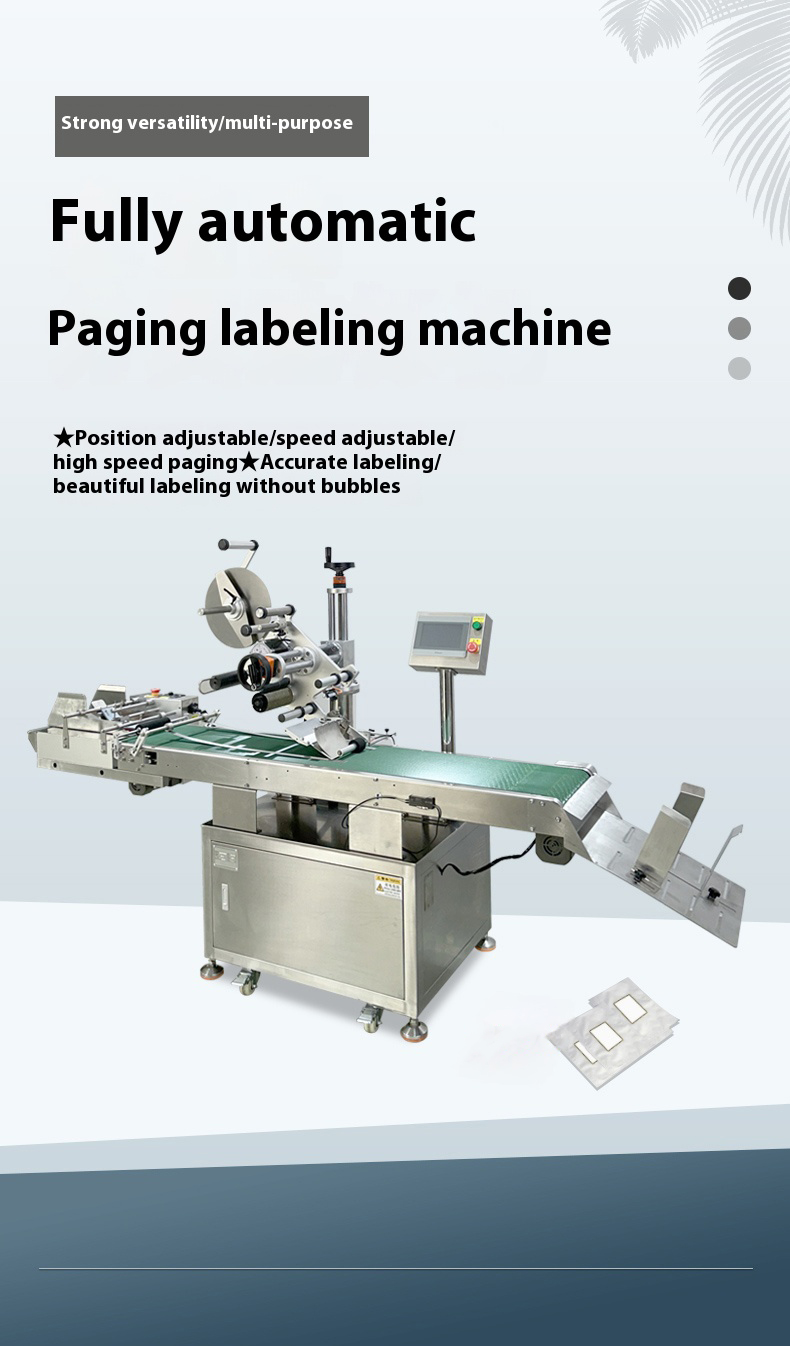
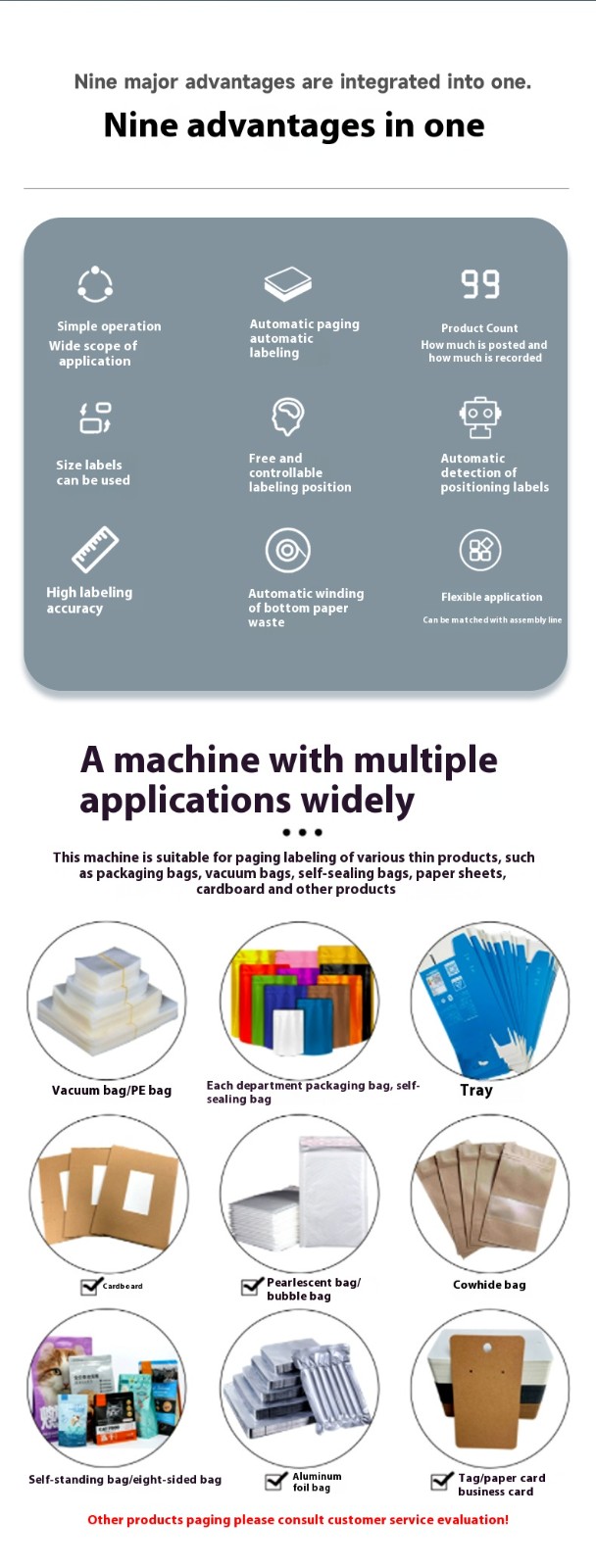


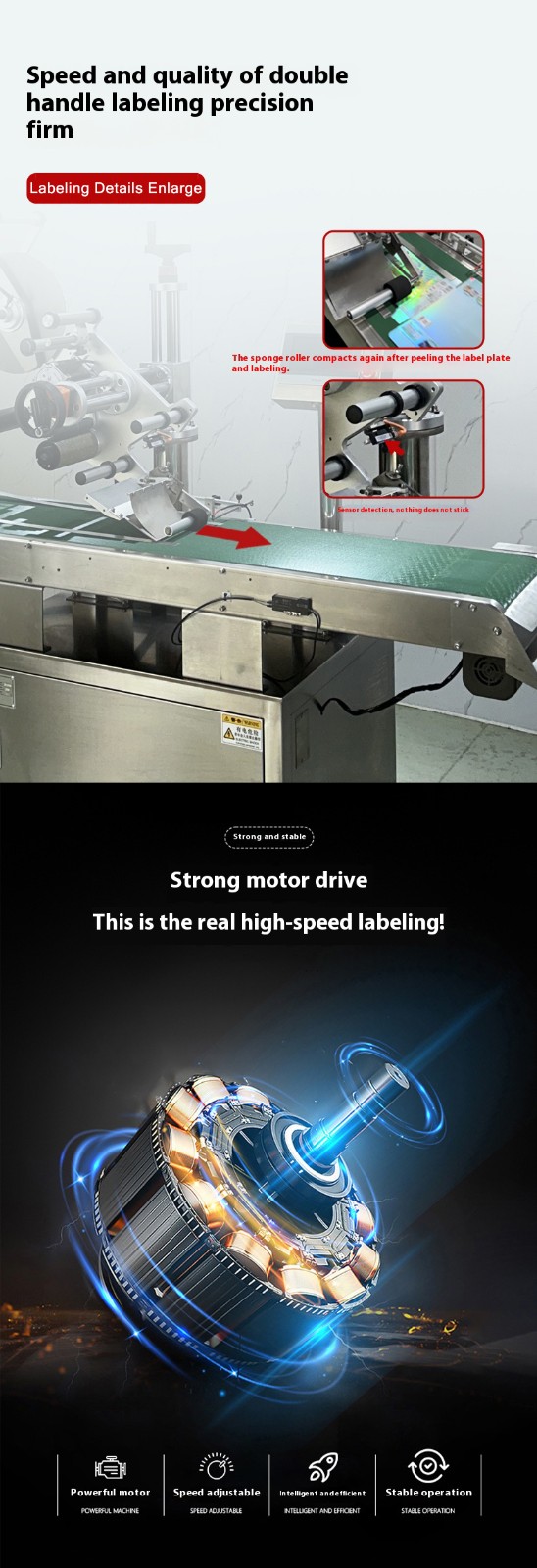
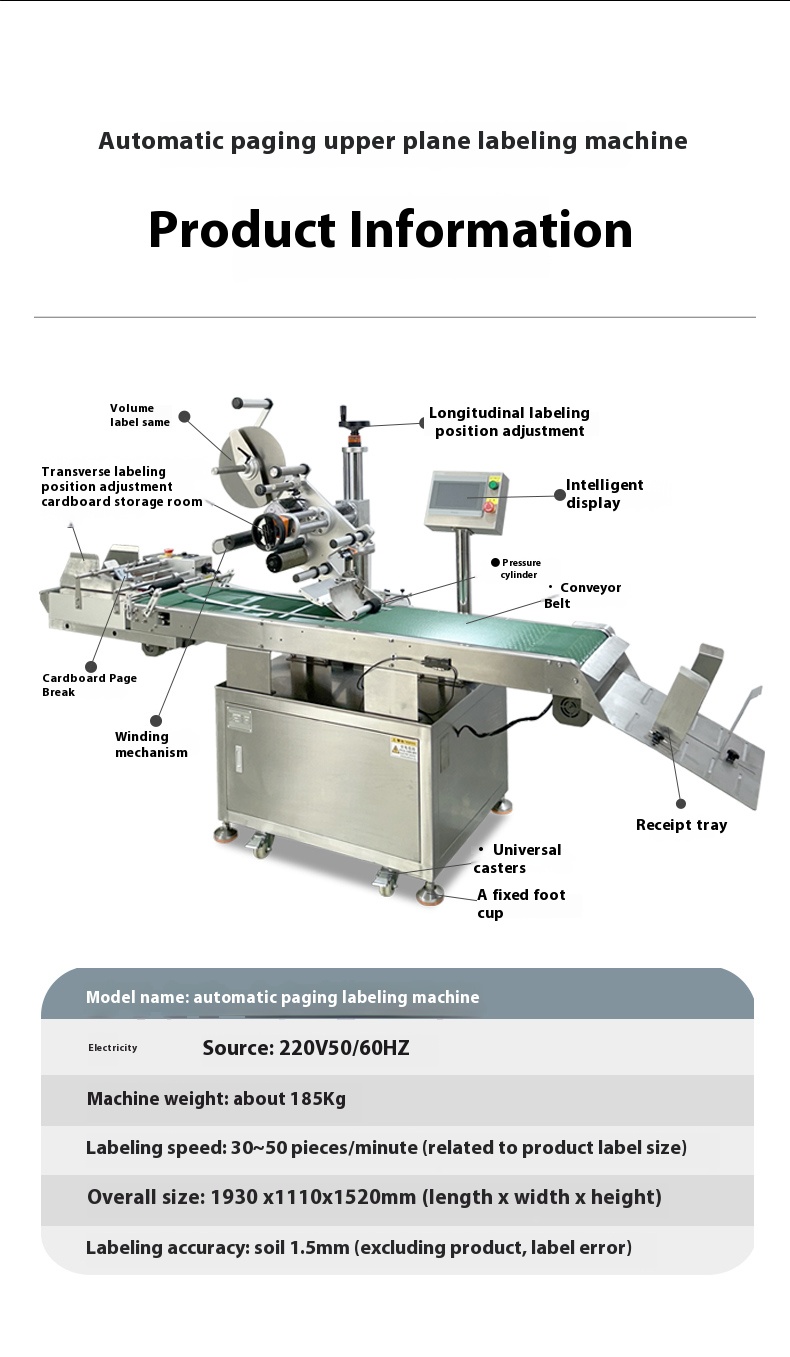


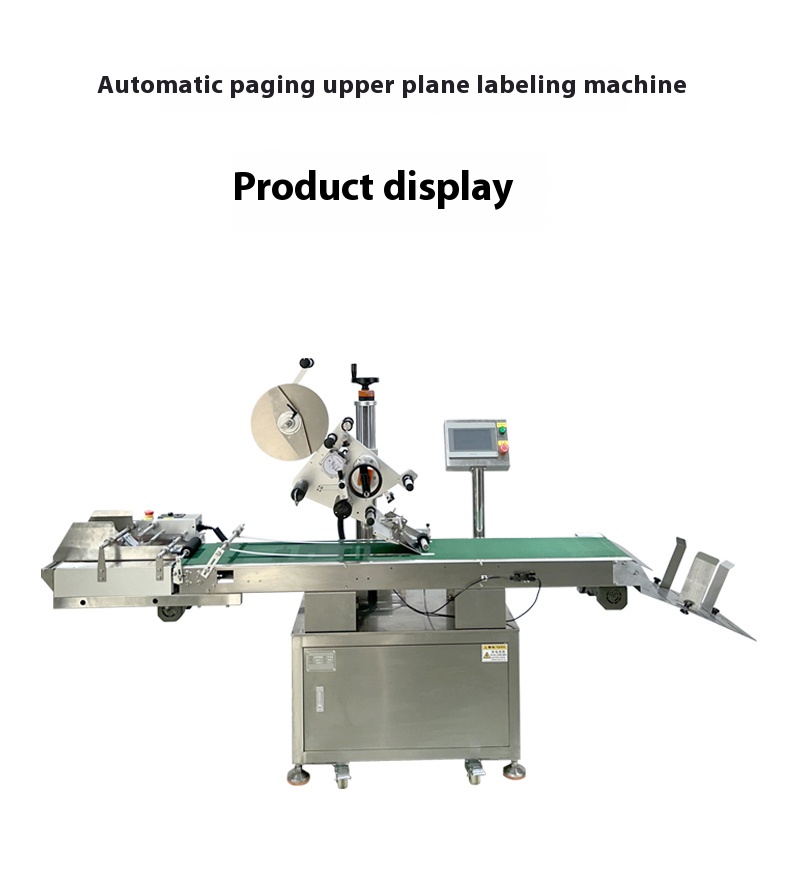

Here is the English translation of the detailed analysis of sensor types and detection principles for automatic page - counting labeling machines:
Core Principle: Detect the position, presence, or spacing of objects through changes in light beam blocking or reflection between the transmitting and receiving ends.
- Structure: The transmitting end (LED) and receiving end (photosensitive element) are installed separately to form a through - beam optical path.
- Detection Logic:
- When there is no object blocking, the receiving end continuously receives the light beam and outputs a stable signal.
- When a product passes through the light path, the beam is blocked, and the receiving end's signal changes abruptly, triggering actions of the labeling control system (such as label peeling or motor start).
- Typical Applications:
- Detect whether products are in place (e.g., at the outlet of the page - counting device or before the labeling station).
- Counting function (statistical count of passing products).
- Advantages: Long detection distance (up to several meters), strong anti - interference capability, suitable for high - speed production lines.
- Structure: The transmitting and receiving ends are integrated into the same module, using the reflection of light beams from the object's surface for detection.
- Detection Logic:
- The transmitting end emits a light beam, and when an object approaches, the reflected light is captured by the receiving end to trigger a signal.
- Sensitivity (e.g., threshold of reflected light intensity) can be adjusted to adapt to products of different colors and materials (dark objects require close - range detection, while light - colored objects can be detected from a distance).
- Typical Applications:
- Detect the presence of transparent or translucent products (e.g., glass bottles, plastic boxes).
- Roughly locate the edges of products (e.g., determine the starting position for label attachment).
- Limitations: Shorter detection distance (usually < 1 meter), vulnerable to ambient light interference, and requires regular cleaning of the lens to avoid dust affecting the reflection effect.
- Structure: The transmitting and receiving ends are integrated, with a reflector (such as a prism) forming an optical path loop.
- Detection Logic:
- The light beam is reflected back to the receiving end by the reflector, and the signal is triggered when an object blocks the optical path.
- The reflector can be installed on the other side of the equipment without the need for symmetrical installation like through - beam sensors, saving space.
- Typical Applications:
- Detect small high - speed moving products (e.g., tablets, small packages).
- Achieve long - distance detection in narrow spaces (e.g., scenarios where installation on both sides of the conveyor belt is limited).
Core Principle: Use optical fibers to transmit light beams and combine with photoelectric elements to achieve high - precision detection in micro - scale or complex environments.
- Through - Beam Fiber Optic: Two optical fibers are respectively used for transmitting and receiving light beams, with a 极小 (micrometer - level) spacing, suitable for detecting extremely small objects (e.g., burrs on the edges of labels).
- Diffuse Reflection Fiber Optic: A single optical fiber both transmits and receives light, and the tip of the probe can be bent to adapt to complex curved surfaces or narrow spaces (e.g., position detection for labeling round bottles).
- Judge the presence or position of objects through changes in the intensity of light signals transmitted by optical fibers, with a precision of up to ±0.1mm.
- The focal point of the fiber optic probe can be adjusted to detect fine features such as label edges and product notches.
- Label Detection:
- Detect whether labels are correctly peeled (e.g., triggering an alarm when the backing paper breaks and the fiber optic probe fails to detect label reflection).
- Identify color marks (Mark points) on labels to calibrate label spacing (e.g., positioning of multi - row label rolls).
- Product Defect Detection:
- Detect the concave and convex structures of special - shaped products (e.g., whether the curved surface radian of cosmetic bottles meets labeling requirements).
- Small size, can be installed in positions where traditional photoelectric sensors cannot reach.
- Strong anti - electromagnetic interference capability, suitable for high - noise industrial environments.
- High detection precision, suitable for miniaturized and high - precision labeling scenarios (e.g., labeling of electronic components).
Core Principle: Calculate the distance to objects or detect transparent/soft objects by emitting ultrasonic waves and measuring the time difference of reflected echoes.
- The transmitting end emits high - frequency sound waves (>20kHz), which are reflected when encountering objects, and the receiving end calculates the distance based on the round - trip time of the sound waves (formula: distance = sound speed × time / 2).
- Can penetrate transparent materials (e.g., glass, plastic) or detect soft objects (e.g., packaging bags), unaffected by color or gloss.
- Labeling of Transparent Products: Detect the position of glass bottles and PET bottles to avoid the problem that photoelectric sensors cannot detect transparent materials.
- Detection of Uneven Surfaces: For deformable objects such as packaging bags, judge the surface flatness through changes in sound wave reflection intensity to ensure accurate labeling positions.
- Lower detection precision than photoelectric/fiber optic sensors (usually ±1 - 3mm).
- Not suitable for high - temperature environments (sound wave propagation is affected by temperature) or strong airflow environments (airflow interferes with sound wave paths).
Core Principle: Collect images through industrial cameras and analyze them via algorithms to determine object positions, dimensions, or defects, belonging to an intelligent detection solution.
- Hardware: High - resolution cameras, light sources (e.g., ring lights, backlights), image acquisition cards.
- Software: Image processing algorithms (e.g., edge detection, template matching, OCR character recognition).
- Positioning and Guidance: Real - time recognition of product posture, calculation of labeling offset, and dynamic adjustment of the labeling head position (e.g., multi - angle labeling of special - shaped products).
- Quality Inspection:
- Detect post - labeling defects such as label skew, bubbles, and incomplete coverage.
- Verify the correctness of label content (e.g., production dates, barcodes).
- Precision labeling of high - end electronic components (e.g., chips, circuit boards).
- High - compliance requirements in the pharmaceutical industry (e.g., labels must cover specified areas, and OCR recognizes batch number consistency).